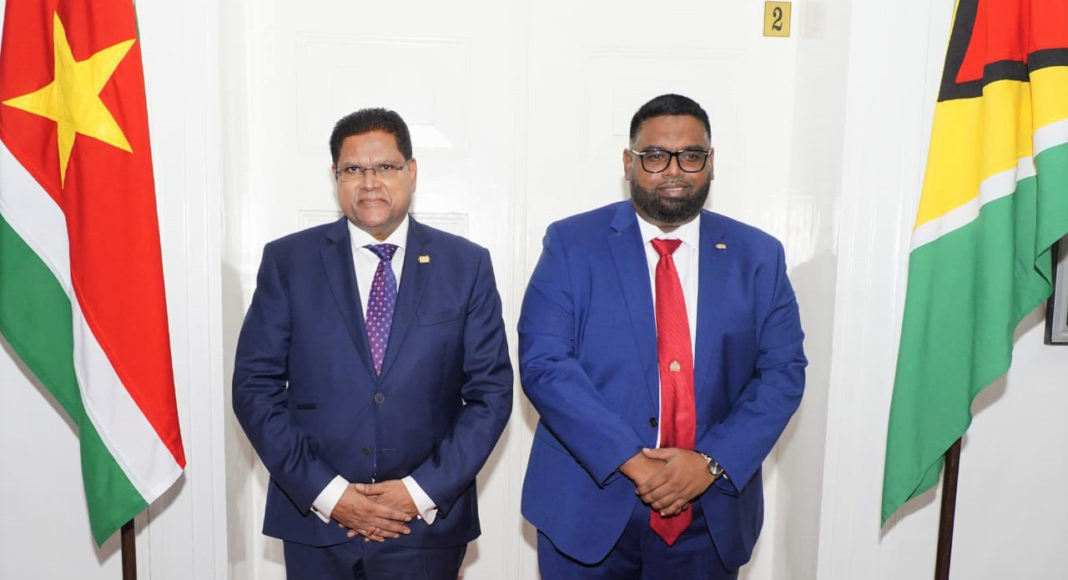The governments of Guyana and Suriname, the new oil and gas deepwater hotspots in South America, are focusing on strengthening bilateral relations and solidifying plans to create new opportunities. Guyana’s President, Dr. Irfaan Ali and his Surinamese counterpart, President Chandrikapersad Santokhi, give this commitment during a joint press conference on Tuesday in Paramaribo.
Mr. Ali said the established Border Commission is working assiduously to resolve outstanding matters related to the Guyana/Suriname border issue and the impact this will have on existing bilateral relations.
“So, while the Commission is doing its work, we are focused on moving ahead with the relationship, moving ahead, and solidifying our plans, moving ahead and bringing the two countries and people closer together,” President Ali said. “We are moving ahead in creating new opportunities, in creating new infrastructure, in creating a framework for trade and ensuring that we are ready and equipped to face the challenges that will come.”
The Guyanese leader further explained to the media that while the Commission is doing its work, both countries will continue to focus on development, advancement, integration as well as placing focus on sustainable relations for the benefit of all. He noted too that “one issue is not dependent on the other”.
“As you rightfully pointed out, we had a maritime issue which has been resolved,” Mr. Ali told reporters. “And I’m sure you’re aware too that we have a Border Commission that is working assiduously on outstanding issues. We have to allow them, just like we allowed the other process to bring a resolution, and both countries are benefiting.”
Meanwhile, in his response, President Santokhi noted that the border issue is very important and requires high level dialogue which the Commission is focusing on.
He said while this is ongoing, the two countries will concentrate on issues that are binding and will create opportunities which require joint strategies. On the agenda are the Corentyne River Bridge, the Offshore Base, and other joint investments.
President Santokhi added that the two countries will move forward in tandem.
“It is our experience in Suriname and I have noticed the similar experience in what Guyana is facing; when you have investors, who want to invest. Then they are looking for an investment opportunity not only in Suriname, but also in Guyana, not only in Guyana, but also Suriname,” he said. “Here we have the opportunity as two leaders to have established a Joint Investment Committee to invite investors who want to invest in both nations—which will be beneficial for both countries.”
A maritime boundary dispute between Guyana and Suriname was settled back in 2007. Under terms of a tribunal’s ruling, Guyana was granted sovereignty over approximately 12,800 sq mi (33,152 sq km) of coastal waters that had been in dispute. Suriname was awarded 6,900 sq mi (17,871 sq km). The ruling ended a six-year standoff that began in June 2000 when the Suriname navy forcibly evicted personnel from a CGX Energy Inc. contracted oil rig. Outstanding matters now relate to a land boundary issue in the New River Triangle area.
ExxonMobil has made 18 discoveries offshore Guyana since 2015 and began producing oil in December 2019. So far, the estimated gross recoverable resources stand at approximately 9 billion barrels of oil equivalent.
Guyana and Suriname joining Brazil as South America’s hottest deepwater plays
Meanwhile in Suriname, Apache has made 3 discoveries off the country’s coast which are estimated to contain combined resources of around 1.4 billion barrels of oil equivalent.




